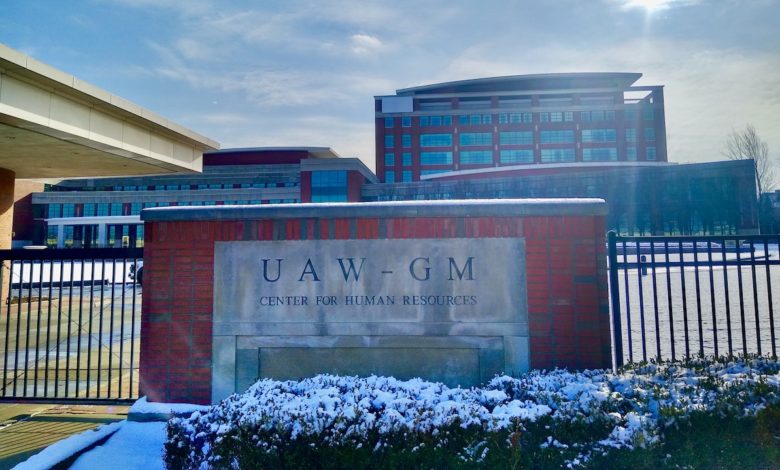
The United Auto Workers international union entered a consent decree with the U.S. Department of Justice on Dec. 14, to resolve a fraud and embezzlement complaint brought against the union. The complaint was a product of an investigation conducted over several years by the DOJ, which resulted in criminal charges being brought against former UAW presidents Gary Jones and Dennis Williams; UAW vice presidents Joe Ashton, Alphonse Iacobelli, General Holiefield and Norwood Jewell; and other UAW leaders and staff.
All of the indicted individuals have pled guilty to the charges of corruption brought against them. The total amount embezzled or fraudulently obtained by these union officials approximates $20 million.
While this theft is a disgusting display of corruption by these former union leaders, it still is less than the $21.6 million General Motors CEO Mary Barra was paid in 2019 alone.
Election of union leadership on the table
One aspect of the consent decree, which has been greeted with cautious enthusiasm by rank-and-file UAW activists, is that it provides for a referendum to be held within six months over the method of choosing union officials. The membership will vote whether to continue the current selection process, where union officials are elected by delegates at a convention of the union, or whether union officials are to be elected by direct vote of the membership on a one-member-one-vote basis.
Activists in Unite All Workers for Democracy, a rank-and-file caucus organized over the last couple of years, have been strongly advocating for direct election of UAW officers by the members.
The UAWD believes the process of selection of officers by convention delegates has allowed for the Administration Caucus to perpetuate itself for years, playing a role in the corruption which became so pervasive in the union leadership.
Federal oversight of union affairs
In addition to the elections issue, the consent decree provides for the appointment of a federal monitor and adjudication officer with broad powers to oversee the running of the union and to impose discipline on officers and members, though they are prohibited from interfering in collective bargaining.
The placing of federal monitors over the union should raise red flags to any militant worker. What if workers decide to take action beyond the normal constraints of federal labor law, through wildcat strikes, plant takeovers, or strikes on political issues beyond the scope of the contract? Will the federal government have the power to step in through the monitors to crush these efforts and run the militants out of the union?
The political independence of unions from control of the capitalist establishment is a paramount principal that is at peril through this federal oversight.
Class collaboration results in corruption
How is it that the UAW, a union previously known for being relatively free of corruption, and where, owing to its communist roots, the leadership is still not paid the exorbitant salaries of officials in other unions like the Teamsters or even SEIU, could degenerate into this pervasive corruption?
This development is a result of the turn to extreme class collaboration which characterized the union’s response to the restructuring of the auto industry beginning in 1979 and continuing today.
The UAW leadership at that time was confronted by the bosses with large-scale job elimination resulting from new technology, including introducing robots into the plants, and by the companies’ ability to export jobs to low-wage countries by outsourcing production overseas.
The union’s response to this attack on the workers’ jobs was to adopt a “Buy American” strategy. They propagated the idea that the workers’ interest was in cooperating with the bosses to save “American” jobs, rather than fighting the bosses with demands for a shorter work week, guaranteed jobs, and building international solidarity with their fellow workers in other countries.
This new company-union cooperation took many forms. Team concept was introduced into the plants, where workers were encouraged to work harder for the good of the team (i.e., management).
In 1982, this writer was fighting speedup on the assembly line at Ford. Rather than the union committee person coming to represent me, I was instead greeted by the committee person along with five managers who cynically exhorted me to get with this program and handed me a team concept hat.
Joint management-union teams began to proliferate. Joint company-union training centers sprang up. The union representatives were workers who were taken off grueling assembly line jobs and instead allowed to spend their time staffing comfortable offices with management personnel.
Just as the bourgeoisie does all over the world, the auto companies skillfully cultivated the loyalty of these “worker representatives,” giving them all the perks normally reserved for the bosses and ushering in the corruption that became pervasive over the years.
At the same time, to help management compete, the union leadership agreed to two- and three-tiered wage scales, with new hires earning half the wages of experienced workers. These tiered wages served to destroy solidarity among the membership.
Militant struggle needed to save workers’ jobs
Today, the union is at a crossroads. A new wave of massive job cuts is about to take place with the conversion to electric vehicle production, which is less labor intensive than the current internal combustion engines.
For the new rank-and-file movement to succeed in reinvigorating the union, it needs to go beyond just fighting for democratic elections. It needs to put forth a program for a shorter work week, 30 hours work for 40 hours pay, and guaranteed jobs.
It needs to develop the militant tactics necessary to win these demands and guarantee that workers get the benefits of new technologies.
And it needs to be ready to fight not just management, but also the federal overseers, who as agents of the capitalist class will surely oppose the militant rank-and-file struggles to come.




